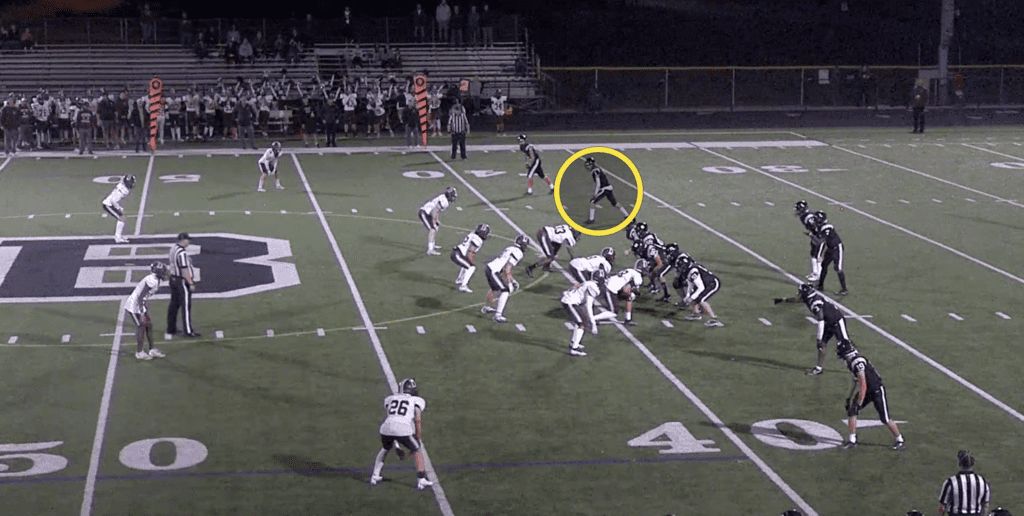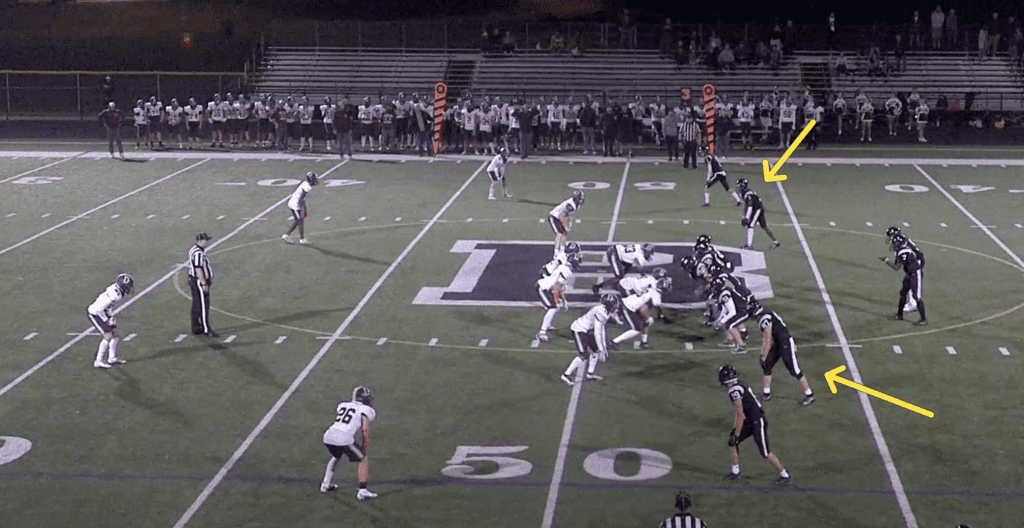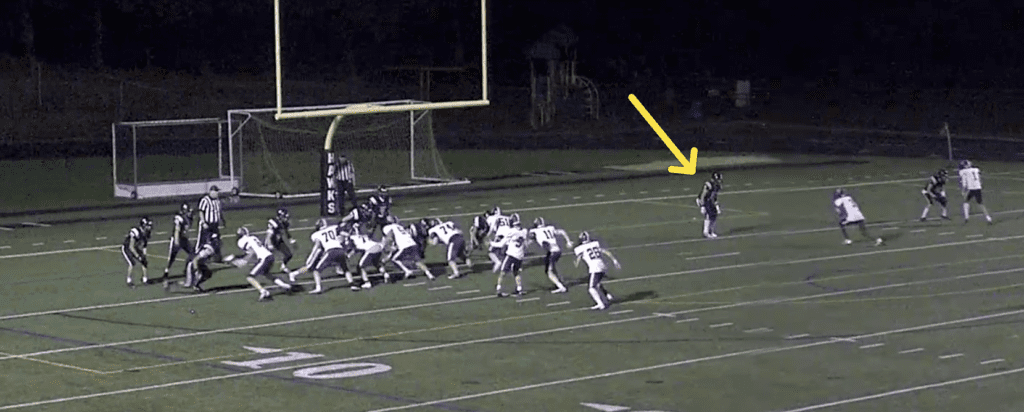With the innovation of the spread offense, slot receivers have become more significant. A slot receiver can often be mixed with other types of receiving positions.
A slot receiver is a player who lines up in the slot position between the offensive tackle and the wide receiver. This player is often quick and is in a position to catch the football or take a handoff.
The slot corner will cover the slot receiver. This position is often smaller, and quicker to run with slot receivers.
In this article, we will look at both the slot receiver and the slot corner.
What Is The Slot Receiver?
When it comes to the alignment of an offense or a defense, you may hear the term “slot receiver” or “slot corner.” If a player is in a “slot” position, they’re not far from the boundary at their position.
There can even be multiple slot receivers or corners on one side of the field.
If you’re looking for a more detailed breakdown of receivers, we’ve created a Complete Football Guide to help you here.
Slot Receivers
As mentioned above, the slot receiver is a receiver who is between the nearest player on the line of scrimmage (Tackle or Tight End) and an outside receiver. The slot receiver was prominent in pass-heavy offenses such as West Coast systems.
The circled player below represents a player who is lined up as a slot receiver:
Slot receivers can line up on either side of the offense, even next to the offensive line.
There can be as many as three slot receivers on the field at once, and they can be aligned all on one side or mixed between both sides.
An example of multiple slot receivers is below from high school football:
When there are multiple slot receivers, they are referred to as the “Inside Slot” and then the “Outside Slot,” moving from the center of the field to the boundary.
As you can see, tight ends as well as speedy receivers will line up as a slot receiver. In most slot formations, the slot receiver is responsible for running precise routes and blocking outside linebackers.
Wide Receivers
The difference between a slot receiver and a wide receiver is their positioning. The slot receiver will line up in the slot position, meanwhile, wide receivers will line up as the widest receiver.
Wide receivers are often taller players who have better straight line speed and can catch balls easily. Every football team will have a wide receiver and slot receivers in their slot position.
Players like Robert Woods and Juju Smith Schuster are good examples of wide receivers who play the wide receiver position.
Slot or Nickel Cornerbacks
A slot cornerback is also referred to as a “Nickel” cornerback.
The slot corner is also dubbed the “Nickel” corner because Nickel is the package that brings the extra defensive backs to the field.
Slot corners are tasked with covering the slot receiver. Slot receivers catch footballs all over the field, so the slot corner must be well conditioned and have athletic ability to cover them. This third corner (or safety), is tasked with covering the third receiver on offense.
This also means there are 5 defensive backs (nickel = 5 cents) on the field.
To learn more about defenses and offensive packages, Ultimate Football Guide.
The extra defensive back will often cover DB lines up in the slot.
Below we highlighted who the slot cornerback is on the field:
Just like with slot receivers, they are lined up inside of a boundary cornerback. They typically are lined up to cover the slot receivers.
Slot corners need to play both press coverage, which is extremely hard to do from the slot and off-man.
Why Is The Slot Receiver Important?
Slot receivers emerging as a big piece of offenses forced defenses to adjust by adding slot cornerbacks. An offense using playmakers in the slot gives a speed player the ability to go inside or outside.
This is much different than a boundary receiver who can only go straight downfield or go inward.
Slot receivers are becoming more prominent, especially in the NFL.
For example, players like Tyreek Hill or Brandin Cooks are smaller receivers who can stretch the defense vertically off pure speed.
They’re also extremely effective in the catch and run game, running shorter routes on the route tree, such as slants and quick outs.
Why Are Nickel Backs Or Slot Corners Important?
As we recently saw in the 2018 playoffs, the San Diego Chargers used 7 defensive backs to stop the Baltimore Ravens with their prolific passing attack and quarterback Lamar Jackson.
Speed is everything, especially in the NFL. Safeties are now averaging around 5’11 – 6’1 and can run with these speedy receivers.
Although it’s nearly impossible to cover Tyreek Hill running vertically down the field, these longer players can help disrupt routes at the line of scrimmage with safety help over the top.
As teams start to spread the field with 4 and 5 receiver sets, blitz-happy teams are forced to take linebackers off the field and put defensive backs on to cover them.
If you liked learning about slot receivers, we recommend you check out our Beginners Guide To Football course.
Keep Learning
Popular slot receivers in the NFL are Cooper Kupp and Julian Edelman.
It all depends on the head coach, but they can choose to use 2, 1, or no slot receivers. Most teams will carry 2 slot receiver positions. In the past few seasons, we’ve seen a rise in the slot position, as players like Tyreek Hill have added an explosive element to offenses.
If you liked learning about slot receivers and slow corners, we recommend you check out our Ultimate Football Guide which will help you improve your football IQ!
Learn more about wide receivers by reading the articles below.
Learn To Stem & Stack At Wide Receiver
How to Beat Press Coverage In Football
Why Do Wide Receivers Point At The Sideline?
What Does A Tight End Do In Football?
Why Do Wide Receivers Wear Gloves?
Slot receivers are starting to replace the full back position in football.
As the game has moved to a more traditional, spread offense, teams are using less power football and more athletes in space.
This often gives the offense an advantage as it allows fast players to play slot receivers and be matched up against a linebacker.
However, it neutralizes the advantage if the defense has a slot corner or a nickel back to play defense against the slot receiver. It also forces the offense to win with the scheme rather than skill.
This is why football gets more difficult as the player gets older.
Skillful players will often dominate; however, the game becomes all about the scheme when matched with other skillful players.





